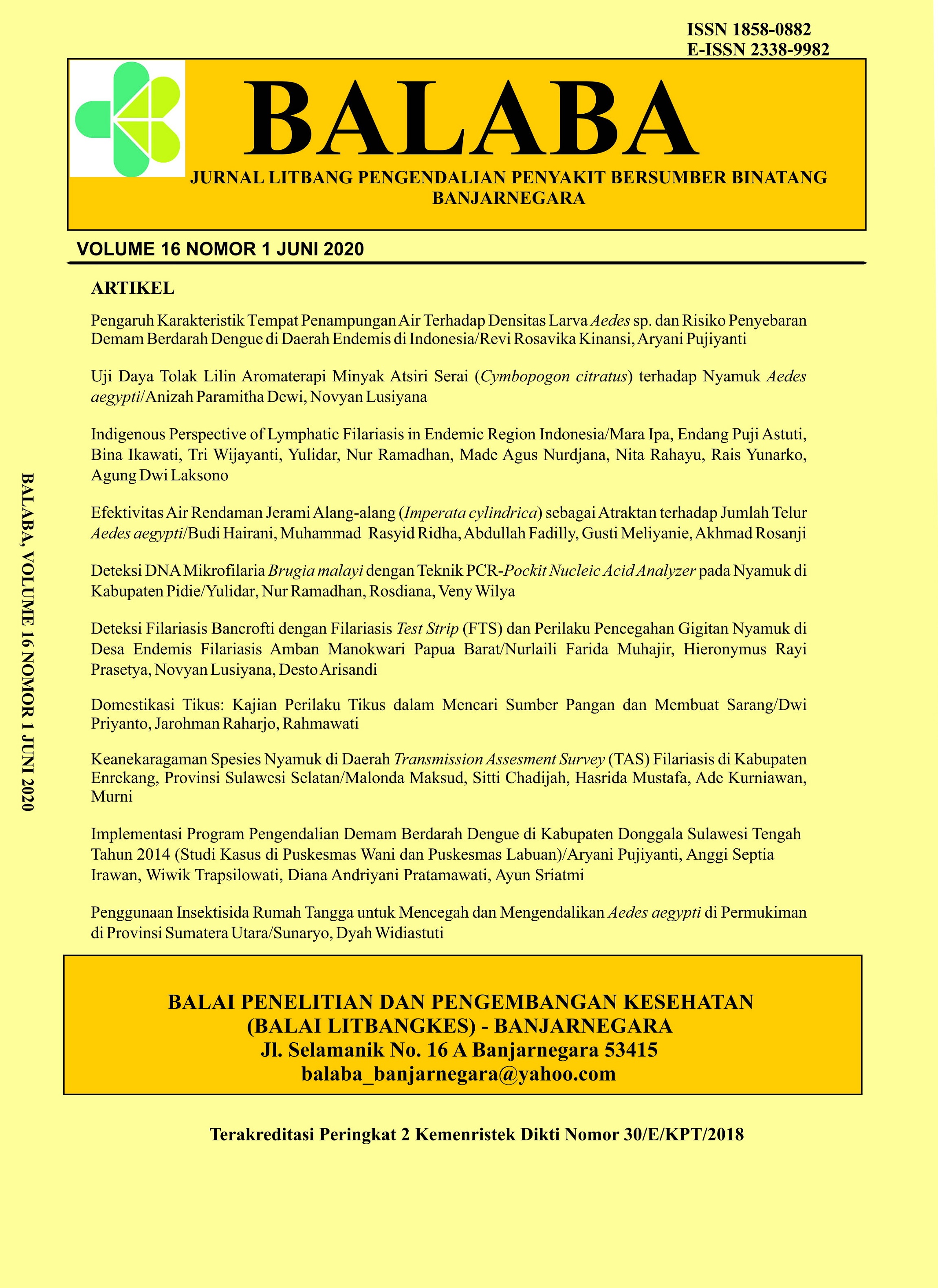Detection of Filariasis Bancrofti with Filariasis Test Strip (FTS) and Preventive Behavior of Mosquito Bites in Amban Endemic Filariasis Village Manokwari West Papua
Keywords:
Bancrofti filariasis, filariasis test strip, preventive behavior, ManokwariAbstract
Mass Drug Administration (MDA) of filariasis in Amban, the endemic area of filariasis, was carried out since 2016. The treatment target of the filariasis area is the area with the microfilaria rate (Mf rate ≥ 1%). The purposes of this study were to detect Wuchereria bancrofti antigens after 3 years of mass treatment and to find out the environmental characteristic and preventive behavior from mosquito bites in Amban the endemic filariasis village Manokwari, West Papua. This observational analytic study was conducted in Amban by examining the subject with the AlereTM Filariasis Strip Test (FTS) and questionnaires collection on 56 research subjects. Respondents were taken capillary blood and followed by tracking environmental and behavioral data of questionnaires. The data obtained was performed by bivariate analysis. The result showed that 56 respondents were negative for W. bancrofti filarial antigen (Mf rate 0%). Research subjects were dominated by the age range of adults, moderate education, and unemployment. The subjects living environment 58.9% far from the garden and 57.1% far from standing water. Preventive behavior from mosquito bites showed that 44.1% use wire ventilation; 44.6% use repellent; 19.6% do not do an outdoor activity at the night; 39.3% use mosquito nets; 28.6% do not do habits of hanging clothes. The level of education was related to the behavior to use repellent (p = 0.025).


